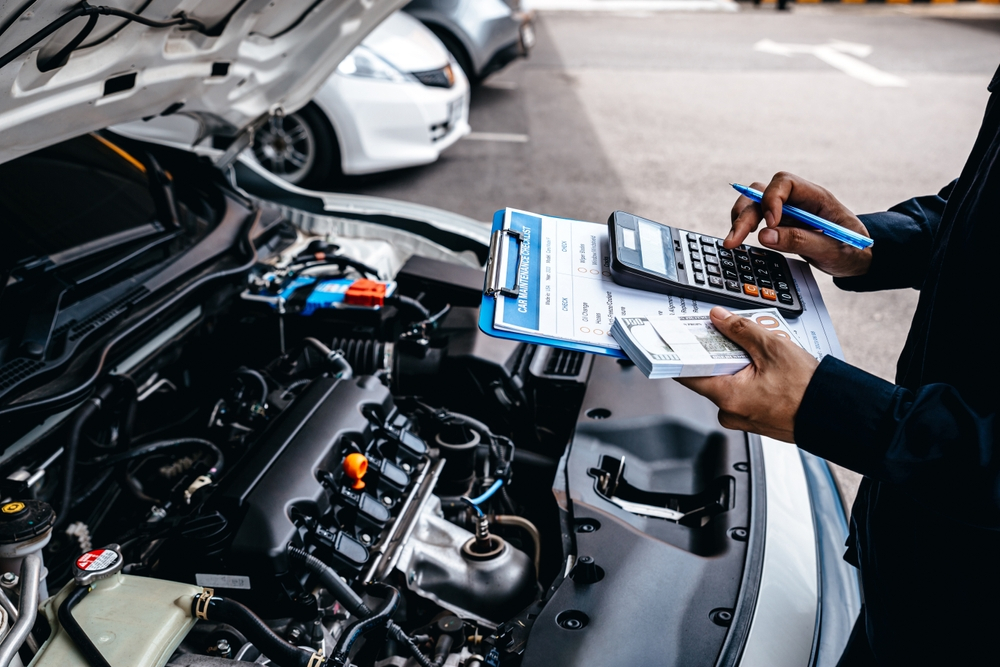
How to prevent unexpected and costly car repairs?
Your car is more than just a mode of transportation; it’s your reliable companion on daily journeys. But what happens when this trusty companion suddenly breaks down, leaving you stranded and your wallet lighter? We’ve all been there, and it’s never a pleasant experience. That’s why we’ve put together this guide on how to steer clear of unexpected and wallet-draining car repairs.
We’ll walk you through simple steps and tips, so you can keep your car humming happily and your bank account intact. Buckle up as we explore the road to hassle-free car ownership in plain and easy-to-understand language.
Regular Maintenance: Keeping Your Car in Tip-Top Condition
Regular maintenance is like giving your car a dose of good health. Just like you need regular check-ups to stay fit, your car needs it too! Here’s why:
Why Regular Maintenance Matters
Regular maintenance prevents small problems from becoming big, expensive ones. It’s like catching a cold early before it turns into a major illness.
Tips for Staying on Schedule
- Oil Changes: Think of oil as your car’s lifeblood. Change it regularly, usually every 5,000 to 7,500 kilometres.
- Brake Inspections: Brakes keep you safe. Have them checked at least once a year.
- Tire Maintenance: Properly inflated tires save fuel and last longer. Check them monthly.
- Fluid Checks: Keep an eye on fluids like coolant, transmission, and brake fluid. Low levels can lead to trouble.
The Pros: Professional Mechanics
- Finding a Trustworthy Mechanic: Ask friends for recommendations or read online reviews to find a mechanic you can trust.
- Benefits of Check-Ups: Regular visits to a mechanic catch problems early, saving you money and headaches down the road.
DIY Car Care
Keeping your car in tip-top shape doesn’t have to be complicated or costly. With a little know-how and some basic tools, you can tackle these essential car care tasks yourself.
Basic car care tasks that car owners can do themselves:
- Checking and topping up fluids: Your car relies on various fluids like oil, coolant, and windshield washer fluid. Regularly check their levels and top them up when needed to ensure your car runs smoothly.
- Replacing air filters: Your car’s engine needs clean air to operate efficiently. Replacing the air filter is as simple as swapping out a dirty one for a clean one. It’s like giving your car’s lungs a breath of fresh air.
- Changing wiper blades: Clear visibility is crucial for safe driving, especially during rain or snow. Replace old, worn-out wiper blades to maintain a crystal-clear windshield.
- Inspecting and rotating tires: Keeping your tires in good condition is vital for safety and fuel efficiency. Regularly inspect them for wear and tear, and don’t forget to rotate them to ensure even wear.
Importance of having essential tools in your car:
Having a basic toolkit in your car can be a lifesaver. It allows you to handle minor issues on the road and perform simple maintenance tasks without the need for a mechanic.
Step-by-step guides for simple DIY maintenance tasks:
- Changing the oil: Regular oil changes are essential for your engine’s health. Follow a step-by-step guide to drain the old oil, replace the oil filter, and refill with fresh oil.
- Replacing spark plugs: Spark plugs are crucial for ignition. Learn how to remove and replace them to keep your engine firing smoothly.
- Changing the air filter: An easy task that improves engine performance. Swap out the old air filter with a new one to ensure your car breathes easy.
With these simple DIY car care tasks, you can save money on maintenance and enjoy a smoother, worry-free ride. In case your car is not worth repairs or maintenance, still you have alternate options like Free car removal, to get rid of your vehicle.
Driving Habits: How They Affect Your Car and What You Can Do
Our driving habits can significantly impact the health of our cars and our wallets. These are some simple tips to drive responsibly and prevent unnecessary wear and tear on your vehicle.
The Impact of Driving Habits on Car Health
The way you drive can significantly affect your car’s health. Here’s how:
- Fuel Efficiency: Aggressive driving, like rapid acceleration and sudden stops, can guzzle more fuel. This not only costs you more at the pump but also strains your engine.
- Brake Wear: Slamming on your brakes frequently wears out brake pads faster, leading to costly replacements.
- Engine Strain: Speeding and pushing your car too hard can put extra stress on the engine, potentially causing breakdowns or the need for expensive repairs.
- Suspension and Tire Wear: Rough driving can harm your car’s suspension and tires, leading to an uncomfortable ride and added expenses.
Tips for Responsible Driving to Prevent Wear and Tear
- Avoiding Aggressive Driving: Sudden starts and stops can strain your engine and brakes. Drive smoothly to save fuel and reduce stress on your car.
- Using Proper Braking Techniques: Gentle braking minimises wear on brake pads and helps your brakes last longer.
- Being Mindful of Speed Limits: Speeding not only risks your safety but also increases fuel consumption and puts extra strain on your engine.
- Minimising Idling Time: Idling consumes fuel and produces unnecessary emissions. Turn off your engine when parked for more than a minute.
The Influence of Road Conditions on Car Maintenance
- Tips for Driving on Rough or Gravel Roads: When driving on bumpy roads, slow down to protect your suspension and tires. Be cautious to avoid potholes.
- Precautions in Extreme Weather Conditions: Rain, snow, and extreme heat can be tough on your car. Ensure your tires are in good condition, use windshield wipers when it’s wet, and maintain the right coolant levels in extreme temperatures.
Scrap car removal Sydney reveals that many cars that end up in their yard mostly get damaged because of bad driving habits.
Protecting Against Common Issues
Your car can face some common problems, especially in Australia’s unique conditions. Let’s look at these issues and how to protect your vehicle:
Common Car Problems in Australia
- Overheating in Hot Weather: Australia’s scorching summers can make your car’s engine feel like it’s baking. Keep an eye on the temperature gauge and make sure your coolant levels are good. Stop and let your engine cool if it gets too hot.
- Dealing with Wildlife on the Road: Our roads often cross paths with curious wildlife. Be cautious, especially at dawn and dusk when animals are most active. Install bull bars or use deer whistles to deter them from coming too close.
- Preventing Rust in Coastal Areas: Living by the coast is lovely, but the salty air can cause rust. Wash your car often and consider applying a rust-proofing treatment to keep your car’s body in top shape. However, you can also use car paint protection film PPF Singapore to protect your car from scratches!
Protective Measures for Specific Issues
- Installing Radiator Protectors: Add a grille or mesh to your car’s front to protect the radiator from debris. This keeps your engine cooler and prevents damage.
- Using Wildlife Deterrents: Attach devices like animal reflectors to your car to warn animals away. These simple gadgets can help you avoid collisions with critters.
- Rust Prevention Techniques: Regularly wash and wax your car, paying extra attention to the undercarriage. Rust-proofing sprays can also help shield your vehicle from corrosion.
By taking these straightforward steps, you can safeguard your car against these common Australian issues and enjoy a smoother ride.
Emergency Preparedness
Imagine you’re cruising down the highway, and suddenly, your car sputters to a stop. It’s a situation no one wants to be in, but it can happen to anyone. That’s why being prepared for unexpected breakdowns is crucial.
The Importance of Being Prepared for Unexpected Breakdowns
Being ready for the unexpected can save you a lot of trouble and stress. Whether you’re in the middle of nowhere or stuck in heavy traffic, having a plan can make all the difference.
Creating an Emergency Car Kit
- Necessary Tools and Equipment
It’s like having a superhero utility belt for your car. Include basics like a flashlight, jumper cables, a spare tire, and a jack. These tools can help you get back on the road or at least stay safe until help arrives.
- First Aid Supplies
You never know when a small injury might happen. Keep a basic first aid kit in your car with bandages, antiseptic wipes, pain relievers, and any necessary personal medications.
- Emergency Contact Information
Write down important numbers like roadside assistance, your insurance company, and a trusted friend or family member. Having these contacts handy can be a lifesaver.
Knowing What to Do in Case of a Breakdown
- Safety Precautions
If your car breaks down, first make sure you’re safe. Pull over to the side of the road, turn on your hazard lights, and stay inside your vehicle if it’s not safe to exit. Avoid standing behind or in front of your car in heavy traffic.
- Contacting Roadside Assistance
If you can’t fix the issue yourself, call for help. Roadside assistance can rescue you from most sticky situations, whether it’s a dead battery, a flat tire, or an engine problem. They’re like your automotive guardian angels.
Being ready for the unexpected isn’t just a good idea; it’s a smart move for any car owner. With a well-prepared emergency car kit and knowing what to do in case of a breakdown,
Insurance and Extended Warranties
When it comes to protecting your car and your wallet, understanding your options is crucial. Car insurance, like a safety net, shields you from unexpected expenses. You can choose from different types, but comprehensive coverage is like the superhero of insurance plans. It covers a wide range of mishaps, from accidents to theft, giving you peace of mind.
Extended warranties are another shield against unexpected car repairs. They act as a safety buffer when your manufacturer’s warranty expires. If your car suddenly acts up, the extended warranty can save you from hefty repair bills. To make the right choices, look for a policy that suits your needs and budget. Don’t rush; research and find the insurance and warranty coverage that’s just right for you. It’s all about keeping your car and your finances on the safe side.
Additional Legal and Safety Considerations
Ensuring your car is safe and road-ready involves more than just regular maintenance. Let’s explore some essential legal and safety considerations in plain and simple terms.
Pink Slip (Vehicle Safety Inspection)
- What is a pink slip?: A pink slip is like a health check for your car. It’s an inspection to make sure your vehicle is safe to be on the road.
- When is it required in Australia?: You need a pink slip when you buy or sell a used car, or when your registration is due for renewal.
- How often should you get a pink slip inspection?: Usually, you’ll need one every year, but it depends on your state or territory.
Importance of Passing the Pink Slip Inspection
- Consequences of failing the inspection: If your car doesn’t pass, you can’t register it. That means you can’t legally drive it until it’s fixed and passes the inspection.
- Tips for ensuring your car passes the inspection: Keep your car well-maintained, especially brakes, lights, and tires.
Other Legal Requirements
- Vehicle registration and renewal in Australia: You must register your car, and the fees vary by state. Renew it on time to avoid fines.
- Mandatory insurance coverage: Compulsory Third Party (CTP) insurance is a must to cover injury costs in case of an accident.
- Compliance with emissions standards: Ensure your car meets emission rules to protect the environment and avoid penalties.
These legal and safety steps help keep you, your car, and others safe on Australian roads.
Conclusion
In conclusion, taking proactive steps such as regular maintenance, responsible driving, and staying compliant with legal requirements like the pink slip inspection can significantly reduce the risk of unexpected and costly car repairs in Australia. By following these simple guidelines, you’ll not only save money but also ensure your vehicle’s longevity and safety on the road.



